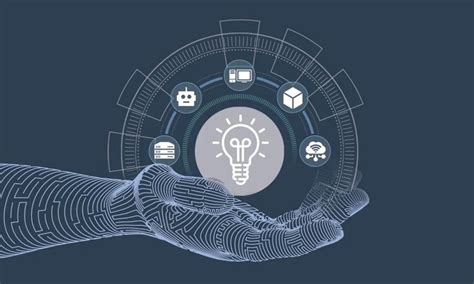The digital economy has revolutionized the way we conduct business, interact socially, and experience the world. As technology continues to evolve at breakneck speed, emerging trends are reshaping traditional industries and creating unprecedented opportunities for innovation. This article explores the transformative forces driving the digital economy, delves into emerging technologies, and examines both the challenges and prospects that lie ahead for businesses and governments alike.
In recent years, the rapid digital transformation has redefined economic activities and business models across the globe. With advancements in cloud computing, artificial intelligence (AI), blockchain, and the Internet of Things (IoT), the economic landscape is shifting towards a more interconnected, efficient, and data-driven environment. As digital technologies permeate everyday life, industries are compelled to adapt in order to thrive in an increasingly competitive market.
This comprehensive analysis provides an in-depth overview of the digital economy, focusing on its key drivers, the innovations that are reshaping industries, and the strategic challenges faced by organizations. By understanding these emerging trends, stakeholders can better prepare for the future, optimize operational efficiency, and seize new market opportunities. The following sections cover the evolution of digital technologies, the impact on global markets, and the policy implications that accompany this rapid transformation.
The Digital Economy
The digital economy is defined by the extensive use of digital technologies to enhance economic activities. It encompasses the creation, distribution, and consumption of digital goods and services, transforming traditional business operations into dynamic digital ecosystems. Several factors have contributed to the rise of the digital economy:
- Connectivity and Internet Penetration: The widespread adoption of high-speed internet and mobile connectivity has made digital services accessible to billions of people worldwide.
- Technological Innovation: Continuous breakthroughs in areas such as AI, machine learning, and data analytics are driving efficiencies and opening new avenues for revenue generation.
- Consumer Behavior: As consumers increasingly rely on digital platforms for everything from shopping to communication, businesses are forced to adopt digital strategies to remain competitive.
- Globalization: Digital platforms have enabled businesses to expand beyond geographical boundaries, fostering international collaboration and competition.
The evolution of digital infrastructure has led to a transformation in how products and services are delivered. Traditional brick-and-mortar establishments are giving way to e-commerce platforms, digital marketplaces, and innovative mobile applications that provide convenience, speed, and personalization. This transformation is not only altering consumer expectations but also compelling companies to rethink their strategies in terms of marketing, customer engagement, and product development.
Moreover, digital technologies have democratized access to information and resources, leveling the playing field for startups and small businesses. Entrepreneurs can now leverage online tools and platforms to build scalable business models without the massive capital investments once deemed necessary. The result is a more vibrant, competitive economic landscape where innovation is key to survival.
Key Emerging Trends in the Digital Economy
The ongoing digital revolution is being driven by several transformative trends that are reshaping industries. Below, we explore some of the most significant trends that are currently defining the digital economy:
A. Blockchain and Decentralization
Blockchain technology is one of the most disruptive innovations in the digital space. Initially known as the backbone of cryptocurrencies, blockchain offers a decentralized and secure ledger system that has the potential to transform numerous sectors:
A. Transparency: Blockchain allows for immutable records, increasing accountability in financial transactions, supply chains, and governance.
B. Security: With its decentralized nature, blockchain reduces the risk of data breaches and fraud.
C. Smart Contracts: Automated contracts that execute terms when conditions are met can streamline processes in legal, real estate, and various other fields.
As more industries adopt blockchain, its applications continue to expand beyond cryptocurrencies, influencing sectors such as healthcare, logistics, and digital identity verification.
B. Artificial Intelligence and Machine Learning
Artificial intelligence and machine learning are at the forefront of digital transformation. These technologies empower systems to analyze vast datasets, identify patterns, and make autonomous decisions:
A. Enhanced Personalization: AI algorithms drive personalized marketing campaigns and product recommendations, increasing customer engagement and satisfaction.
B. Automation of Processes: Routine tasks are being automated, freeing human resources to focus on strategic initiatives.
C. Predictive Analytics: By forecasting trends and consumer behavior, businesses can proactively adjust their strategies.
The integration of AI into everyday business operations is not only boosting efficiency but also opening new avenues for innovation in areas such as natural language processing, image recognition, and robotics.
C. Internet of Things (IoT) and Smart Devices
The proliferation of IoT devices is another critical trend shaping the digital economy. From smart homes to industrial automation, connected devices are generating vast amounts of data that can be harnessed to improve decision-making:
A. Enhanced Efficiency: IoT devices enable real-time monitoring and control of systems, reducing downtime and operational costs.
B. Data-Driven Insights: The continuous flow of data from smart devices provides actionable insights into consumer behavior and system performance.
C. Integration Across Platforms: IoT technology is increasingly integrated with AI and cloud computing to offer more comprehensive solutions.
The expanding network of connected devices is transforming how businesses operate, enabling more agile and responsive strategies.
D. Fintech Innovations
Financial technology, or fintech, is revolutionizing the way financial services are delivered. Innovations in this field have led to the emergence of digital payment platforms, online lending, and blockchain-based financial instruments:
A. Digital Payments: Mobile wallets and contactless payment systems have simplified transactions, offering convenience and security to consumers.
B. Online Banking: Digital platforms are providing seamless banking experiences, reducing the need for physical branches.
C. Peer-to-Peer Lending: Fintech solutions have opened up new channels for lending and borrowing, democratizing access to capital.
These innovations are not only enhancing customer experience but also driving financial inclusion by providing services to unbanked and underbanked populations worldwide.
E. Cloud Computing and Edge Computing
Cloud computing has become a cornerstone of modern business operations, offering scalable resources and on-demand services. However, edge computing is emerging as a complementary technology that brings computation closer to the data source:
A. Scalability: Cloud computing allows businesses to scale their operations efficiently without significant capital investment in physical infrastructure.
B. Cost Efficiency: With a pay-as-you-go model, companies can optimize their expenses by only paying for what they use.
C. Real-Time Processing: Edge computing facilitates faster data processing by handling data locally, reducing latency, and improving response times.
The combination of cloud and edge computing provides businesses with the flexibility and performance required to support real-time applications and advanced analytics.
F. Digital Transformation in Business Models
Digital transformation is more than just a technological upgrade—it is a fundamental shift in how businesses operate. Companies are reimagining their business models to leverage digital tools for better customer engagement, operational efficiency, and innovation:
A. Omni-channel Strategies: Businesses are integrating multiple channels—online, mobile, and physical stores—to create a seamless customer experience.
B. Data-Driven Decision Making: The availability of real-time data allows companies to make informed decisions and tailor their offerings to market demands.
C. Agile Methodologies: Adopting agile principles helps organizations quickly adapt to changing market conditions and technological advancements.
Digital transformation is enabling companies to become more customer-centric, agile, and innovative, ultimately leading to enhanced competitiveness in the global market.
G. Cybersecurity and Data Privacy
As businesses digitize their operations, cybersecurity and data privacy have become paramount. Protecting sensitive data from cyber threats is critical to maintaining consumer trust and ensuring regulatory compliance:
A. Advanced Threat Detection: Modern cybersecurity solutions utilize AI and machine learning to detect and mitigate threats in real-time.
B. Regulatory Compliance: With increasing data privacy regulations worldwide, businesses must implement robust security measures to avoid legal penalties.
C. User Education: Raising awareness about cybersecurity best practices is essential for minimizing risks associated with human error.
Organizations are investing significantly in cybersecurity measures to safeguard their digital assets and maintain resilience in the face of evolving cyber threats.
H. Big Data and Analytics
The exponential growth of data in today’s digital economy has given rise to big data analytics. This technology is pivotal in converting raw data into actionable insights, driving smarter decision-making across industries:
A. Enhanced Business Intelligence: Big data tools allow companies to analyze trends and patterns, enabling them to respond proactively to market changes.
B. Customer Insights: By understanding customer behavior, businesses can design more effective marketing strategies and improve customer service.
C. Operational Efficiency: Analytics help in identifying inefficiencies and optimizing business processes for better productivity.
Big data analytics is revolutionizing how businesses operate, offering a competitive edge by transforming data into strategic assets.

I. Virtual and Augmented Reality
Virtual reality (VR) and augmented reality (AR) are reshaping how consumers interact with digital content. These immersive technologies are transforming sectors such as retail, education, and entertainment:
A. Enhanced User Experiences: VR and AR provide interactive experiences that go beyond traditional media, captivating audiences and driving engagement.
B. Training and Education: These technologies offer realistic simulations for training purposes, enhancing learning outcomes in various industries.
C. Marketing Innovations: Brands are leveraging VR and AR to create unique marketing campaigns that resonate with tech-savvy consumers.
As VR and AR continue to evolve, their integration into mainstream applications is expected to expand, further blurring the lines between physical and digital realities.
Impact on Global Markets and Businesses
The emerging trends in the digital economy are having profound effects on global markets and business practices. Companies that harness these technologies effectively can enhance their operational efficiencies and open new revenue streams. The following points highlight the multifaceted impact of digital innovations:
A. Market Disruption: Traditional industries are being challenged by digital-first companies. New entrants leveraging digital technologies are redefining market standards and consumer expectations.
B. Global Reach: Digital platforms facilitate international trade by connecting businesses with a global audience, enabling small enterprises to compete on a larger scale.
C. Enhanced Customer Engagement: Digital channels allow companies to engage with customers in more personalized and interactive ways, leading to improved loyalty and retention.
D. Operational Agility: The integration of automation and data analytics enables businesses to respond swiftly to market fluctuations, ensuring resilience in uncertain economic conditions.
Businesses across various sectors are rethinking their strategies to align with the evolving digital landscape. For example, retail companies are investing heavily in e-commerce platforms and data analytics to better understand consumer behavior, while financial institutions are embracing fintech innovations to streamline services and enhance customer satisfaction. This digital shift not only improves efficiency but also fuels innovation, leading to the creation of new business models that disrupt established industries.
Furthermore, the digital economy is reshaping workforce dynamics. With remote work and digital collaboration tools becoming the norm, companies are able to tap into a global talent pool. This not only increases diversity but also drives innovation through cross-cultural collaboration and the exchange of ideas. In turn, organizations are investing in digital upskilling programs to equip employees with the necessary skills to thrive in a technology-driven environment.
Challenges and Opportunities
While the digital economy presents numerous opportunities, it also poses several challenges that need to be addressed to ensure sustainable growth. Navigating this complex landscape requires a balanced approach that combines technological innovation with robust regulatory frameworks and ethical considerations.
Key Challenges
A. Data Security and Privacy: As more data is collected and processed digitally, protecting it from breaches becomes increasingly critical. Companies must invest in advanced cybersecurity measures and adhere to stringent data privacy regulations.
B. Regulatory Compliance: Governments around the world are enacting new regulations to govern digital activities. Companies must navigate this evolving regulatory landscape while ensuring their operations remain compliant.
C. Digital Divide: Despite significant technological advancements, a digital divide still exists between developed and emerging markets. Bridging this gap is essential for inclusive growth in the global economy.
D. Workforce Adaptation: As automation and AI become more prevalent, there is a growing need for reskilling and upskilling the workforce to adapt to new roles and responsibilities.
Emerging Opportunities
A. Innovation-Driven Growth: The integration of emerging technologies offers companies the chance to innovate their products and services, opening up new revenue streams and enhancing competitive advantage.
B. Global Collaboration: Digital platforms facilitate international partnerships and collaborations, allowing businesses to leverage expertise from around the world.
C. Customer-Centric Models: Enhanced data analytics enable companies to tailor their offerings to individual customer needs, leading to improved satisfaction and loyalty.
D. Sustainable Practices: Digital solutions can promote sustainable business practices by optimizing resource usage and reducing waste, contributing to environmental conservation efforts.
Organizations that proactively address these challenges and capitalize on the opportunities stand to gain a significant competitive edge in the evolving digital economy. It is imperative for businesses to invest in technological infrastructure, foster a culture of innovation, and collaborate with stakeholders across industries to navigate the rapidly changing landscape.

Future Outlook and Policy Implications
The digital economy is poised for continued growth and transformation, with emerging trends setting the stage for a future marked by unprecedented innovation and efficiency. Policymakers and business leaders must work in tandem to create an environment that encourages technological advancement while safeguarding public interests.
Anticipated Developments
A. Further Integration of AI and Machine Learning: As AI technologies mature, we can expect even greater integration into business operations, leading to more efficient and adaptive systems.
B. Expansion of IoT Ecosystems: The proliferation of smart devices and IoT solutions will further enhance data connectivity, enabling smarter cities and more efficient supply chains.
C. Widespread Adoption of Blockchain: With ongoing improvements in blockchain technology, its applications are likely to expand into new sectors, providing enhanced transparency and security.
D. Rise of Hybrid Work Models: The ongoing evolution of remote and hybrid work arrangements will continue to reshape organizational structures and workforce dynamics.
Policy and Regulatory Considerations
As the digital landscape evolves, governments must develop policies that foster innovation while protecting citizens and businesses. This includes:
A. Data Protection Laws: Strengthening data privacy regulations to ensure that personal information is handled securely and transparently.
B. Cybersecurity Frameworks: Implementing robust cybersecurity measures to defend against increasingly sophisticated cyber threats.
C. Incentives for Innovation: Creating policies that encourage research and development in emerging technologies, including tax incentives and public-private partnerships.
D. Bridging the Digital Divide: Investing in infrastructure and educational programs to ensure equitable access to digital technologies across all regions.
By addressing these policy areas, governments can ensure that the digital economy remains robust, secure, and inclusive, providing a solid foundation for sustained economic growth and innovation.
Conclusion
The digital economy represents a paradigm shift in how we conduct business and engage with the world. Emerging trends such as blockchain, artificial intelligence, IoT, and fintech innovations are transforming traditional industries and creating new opportunities for growth and efficiency. While the rapid pace of technological change brings challenges in data security, regulatory compliance, and workforce adaptation, the potential benefits are vast.
Businesses that embrace digital transformation, invest in emerging technologies, and adopt customer-centric models will be better positioned to thrive in this evolving landscape. Equally important is the role of policymakers in crafting regulations that balance innovation with protection, ensuring that the digital economy remains an engine of inclusive and sustainable growth.
As we look to the future, the continuous integration of digital technologies will undoubtedly redefine market dynamics, enhance global collaboration, and pave the way for a more connected and intelligent society. By staying informed about emerging trends and adapting strategies accordingly, organizations and governments alike can harness the full potential of the digital revolution, driving progress and prosperity in an increasingly digital world.




